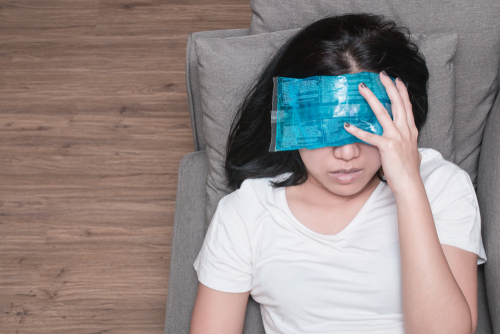


Is it a headache or a migraine? About 20% of the Australian population suffers from migraine at some stage in their lives. It often first appears in childhood, adolescence or early adulthood but affects the greatest number of people between 35 and 45 years of age.
The home doctor experts at House Call Doctor have all the information you need to know about migraines.
What is a migraine?
It’s a neurological disorder that is typically a one-sided throbbing or pulsating headache that is at least moderately intense and can be aggravated by physical activity and other triggers.
Migraine is often associated with nausea and vomiting as well as increased sensitivity to light, sound and even some types of smell.
Tension and other types of headache are different as they are usually felt on both sides of the head.
What triggers migraines?
Migraines are one of the least understood, and poorly treated, medical conditions. Migraine sufferers can experience a range of triggers.
The most commonly reported food triggers are chocolate, cheese, coffee, nuts, citrus fruits, processed meats, additives such as MSG, alcohol, fatty or salty foods and aspartame (artificial sweetener).
Other triggers include:
- Bright/flickering light
- Motion
- Loud sounds
- Strong odours
- Changes in weather
- Fatigue/lack of sleep
- Stress
- Hormones
- Skipping meals or medications.
Can a migraine be prevented?
Identifying and avoiding triggers can reduce the number of migraines you experience which can be done through making changes to your lifestyle. There are medications you can take to reduce not only how many migraines you experience but also their intensity and duration.
The best way to manage migraine is to record and track each migraine, how it impacted you and potential triggers. Sharing this information with your GP or local healthcare professional will help them provide you with an effective treatment plan. Doctors an also diagnose migraines through imaging scans such as a CT scan or MRI which may detect other causes such as tumours, stroke or abnormal brain structures.
What are the treatment options?
Migraines can’t be cured but there are many things you can do to manage them and lessen the severity of symptoms. These include:
- Lifestyle changes
- Self-care remedies such as massaging your scalp and temples, placing a cold cloth over your forehead, or lying down in a quiet, dark room
- Over the counter and prescription medications
- Hormone therapy (if your migraines are related to your menstrual cycle)
- Alternative care such as meditation, acupressure or acupuncture.
For more information, please visit your GP or local healthcare professional. Here are some resources you can use:




